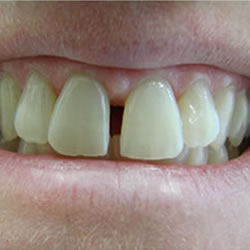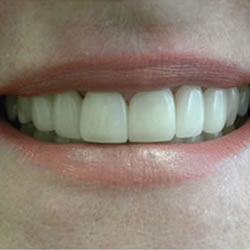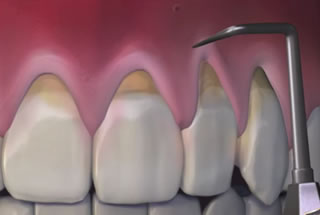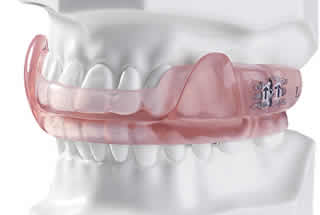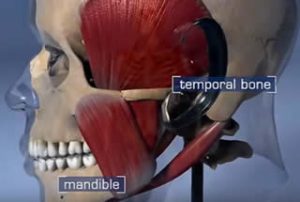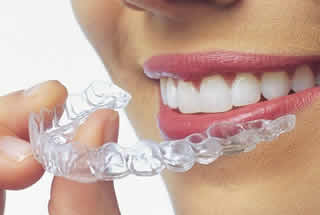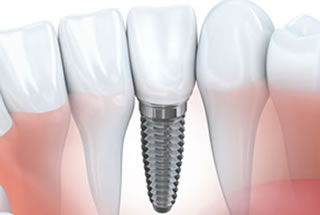
The Social Impact of Invisalign
If you’re considering orthodontic treatment, chances are you’ve heard of Invisalign. This increasingly popular alternative to traditional braces uses a series of clear aligners to gradually shift your teeth into their proper positions. Not only is Invisalign effective, but it’s also less noticeable than metal braces, making it a popular choice for adults and teens alike.
However, one common concern for those considering Invisalign is whether it will affect their social life. After all, when you’re wearing something on your teeth 20-22 hours per day for months on end, it’s natural to wonder how it might impact your day-to-day interactions with others.
Fortunately, the answer isn’t black and white. While there are certainly some ways that Invisalign may have an impact on your social life, much of this depends on how you handle the treatment itself.
Invisalign: A Brief Overview
Before we dive into the social implications of using Invisalign, let’s first take a moment to review what exactly this treatment entails. As we mentioned earlier, Invisalign uses a series of clear plastic trays (also known as aligners) that fit over your teeth snugly in order to gradually shift them into their desired position. Each set of aligners is worn for about two weeks before being replaced by the next set in the series; over time, this process causes your teeth to move slowly but surely until they reach their final location.
One important thing to note about Invisalign is that while it can be highly effective in correcting many types of orthodontic issues (including crowding, spacing issues, and bite problems), it does require a significant commitment from the wearer. In order for Invisalign to work effectively – meaning that you see results as quickly and efficiently as possible – you’ll need to wear your aligners for 20 to 22 hours per day, every day.
This means that unless you’re eating or drinking (more on that later), your aligners should be in your mouth pretty much all the time. So, with that in mind, let’s take a closer look at how Invisalign might affect your social life.
The Pros of Invisalign
A Smile That Is Always Camera-Ready
One of the most significant advantages of Invisalign is its aesthetics. The clear aligners are virtually invisible, which means you can straighten your teeth without having to worry about the unsightly appearance and discomfort associated with traditional braces.
This feature can be especially appealing for individuals who are concerned about their social life. With clear aligners, you won’t have to cover your mouth or avoid smiling when taking pictures with friends.
Comfort and Convenience
Invisalign aligners are made from smooth, comfortable plastic that won’t irritate your cheeks or gums like metal wires and brackets do. They are also removable, which means you can take them out while eating or drinking anything other than water. This advantage eliminates the need to avoid certain foods or spend extra time cleaning around brackets and wires after meals.
Confidence Boosting
Having crooked teeth or an uneven bite can put a damper on your self-confidence and cause feelings of self-consciousness in social situations. By correcting these dental issues with Invisalign, individuals can enjoy a newfound confidence in their appearance, which can positively impact their social life in many ways.
The benefits of Invisalign go beyond just straightening teeth – they also provide aesthetic advantages that boost confidence levels, comfort during treatment, and convenience when it comes to daily life activities such as eating and drinking. These advantages make it easier for people undergoing orthodontic treatment to maintain a positive outlook in social situations while achieving the smile they desire.
The Cons of Invisalign
While there are many benefits of using Invisalign, there are also some cons to consider before starting treatment. Some common concerns about using Invisalign include speech impediments, discomfort, and maintenance.
Say What? Speech Impediments with Invisalign. One of the biggest concerns people have when considering Invisalign is whether it will affect their speech. It’s true that wearing aligners can cause a slight lisp or difficulty pronouncing certain sounds at first. However, most people adjust to the aligners within a few days to a week and any speech issues usually disappear quickly. If you continue to experience problems with your speech while wearing aligners, contact your dentist or orthodontist for advice.
Pain & Discomfort: The Unpleasant Side of Invisalign
Another downside of Invisalign is that it can be uncomfortable at times. You might experience soreness or sensitivity when you first start wearing your aligners or when you switch to a new set.
This discomfort typically subsides after a few days as your mouth gets used to the pressure from the aligners. Over-the-counter pain relievers like ibuprofen can help alleviate any discomfort you may experience during this time.
Maintenance Matters: Keeping Up with Your Aligners
Maintaining good oral hygiene is important with any orthodontic treatment, but it can be especially challenging with Invisalign because you have to remove your aligners every time you eat or drink anything other than water. You’ll also need to brush and floss frequently throughout the day since bacteria can get trapped between your teeth and the aligners if they aren’t cleaned properly.
Remembering to wear your aligners for 22 hours each day can also be a challenge for some people, especially if you have a busy social life and are constantly on the go. All of these issues can potentially impact your social life while undergoing Invisalign treatment.
However, it’s important to remember that these challenges are temporary and the benefits of achieving a straighter smile far outweigh the short-term inconveniences. With patience, perseverance, and a positive attitude, you can successfully navigate these cons and come out with a beautiful new smile.
Coping with Social Situations while Wearing Invisalign
The Challenge of Eating Out
One of the biggest challenges that people face when wearing Invisalign is eating out. Whether it is at a fancy restaurant or a casual diner, the temptation to remove the aligners and indulge in your favorite food can be overwhelming.
However, it is important to resist this temptation and keep your aligners in place for the recommended 22 hours a day. To make eating out with Invisalign easier, consider ordering soft foods that are easy to chew.
Soups, salads, and mashed potatoes are all great options. Alternatively, you can remove your aligners discreetly before eating and then clean them thoroughly before putting them back in.
Attending Special Events
If you have a special event coming up like a wedding or prom, you may be worried about how to handle Invisalign at the event. The good news is that there are ways to manage this.
Firstly, plan ahead and ensure that you have everything you need to take care of your aligners during the event. This includes things like dental wax for any rubbing or discomfort caused by the aligners.
Secondly, practice smiling with confidence so that others don’t notice your aligners as much. You could also consider using teeth whitening products before attending an event so that your smile looks its best.
Addressing Questions and Comments from Others
Another challenge with wearing Invisalign is dealing with questions or comments from others about the treatment. Some people may not even know what Invisalign is and assume you are wearing traditional braces.
To address these questions or comments confidently, it’s important to educate yourself on what Invisalign is and how it works. You could also try changing the topic by asking questions about their own dental experiences or interests.
Ultimately, wearing Invisalign will require some adjustments to your social life, but it doesn’t have to be a major disruption. By following these tips and being prepared, you can continue to live your life normally while undergoing orthodontic treatment.
The Emotional Impact of Invisalign
Undergoing orthodontic treatment can be emotionally challenging, even for adults. It’s not just about having a new appliance in your mouth, but it may also involve adjusting to a new appearance and dealing with the reactions of others. Self-consciousness and anxiety are common emotional responses to wearing Invisalign aligners.
Self-Consciousness: How to Cope
Feeling self-conscious is normal when you first start wearing Invisalign. After all, you have something foreign in your mouth, and it may affect your speech or appearance.
But there are ways to deal with self-consciousness:
- Remember why you opted for Invisalign: You wanted straighter teeth and a more beautiful smile.
- Talk to someone who has undergone orthodontic treatment before: They can reassure you that what you’re experiencing is normal.
- Reward yourself for milestones achieved during treatment: Celebrate every time you switch to a new set of aligners or when your teeth start looking straighter.
Anxiety: How to Cope
Anxiety is another common reaction to wearing Invisalign. You may worry about how long the treatment will take or whether it will be successful.
Here are some tips on managing anxiety:
- Take deep breaths when feeling overwhelmed: Deep breathing helps calm your mind and body.
- Focus on the present moment: Don’t worry about what might happen tomorrow or next month – focus on today’s aligners only.
- Avoid comparing yourself with others: Everyone’s journey with orthodontic treatment is different, so don’t compare yourself with others’ progress.
Maintaining a Positive Outlook: How to Cope
Maintaining a positive outlook is essential to cope with the emotional impact of Invisalign. A positive mindset can make the treatment more manageable and even enjoyable.
Here are some ways to stay positive:
- Think of Invisalign as an investment in yourself: You’re not just getting straight teeth; you’re investing in your health, confidence, and happiness.
- Keep a gratitude journal: Write down three things that you’re grateful for every day, no matter how small or insignificant they seem.
- Surround yourself with supportive people: Family and friends who encourage you and remind you of your progress can help you stay motivated.
The Final Verdict on Invisalign and Social Life
We’ve learned that using Invisalign can affect your social life in both positive and negative ways. The benefits of using Invisalign versus traditional braces far outweigh the inconvenience that comes with maintenance and wear. Not only do they look better, but they are also more comfortable to wear.
On the other hand, common drawbacks like speech impediments and discomfort may cause insecurity or social anxiety. However, with a little bit of preparation and self-assurance, these concerns can be combated with ease.
It’s essential to remember that having an orthodontic treatment is a choice that should not negatively impact your social life or make you feel uncomfortable being around others. Therefore, taking care of oneself mentally is as important as taking care of one’s teeth physically.
Whether or not you decide to get Invisalign should be based on your individual needs and preferences. Still, it’s comforting to know that if you do choose this treatment option, it will not have a long-term negative impact on your social life but could even improve it!
Are dental issues holding you back? Take control of your oral health by booking an appointment with our experienced team at our Toronto dental office.

Welcome to the world of orthodontics, where teens often dread the news of needing braces
But what if we told you there was a way to straighten teeth effectively without unsightly metal brackets and wires?
Say hello to Invisalign, the clear aligner treatment that has taken the orthodontic world by storm. In this article, we will explore how Invisalign can benefit your teen’s oral health and confidence.
Importance of Dental Health for Teens
Teens often prioritize social lives over dental health, but healthy teeth play a crucial role in overall well-being. Poor oral hygiene habits can lead to gum disease, tooth decay, bad breath, and even affect speech patterns or breathing. Straightening crooked teeth also means easier cleaning and less risk for future dental problems.
Benefits of Invisalign for Teens
In addition to improving oral health, there are numerous benefits to choosing Invisalign over traditional braces. For starters, they are virtually invisible and don’t draw attention to one’s mouth in photos or social settings. This is especially important during teenage years when self-esteem may be fragile.
Furthermore, unlike metal brackets that require adjustments every few weeks at the dentist’s office; with Invisalign aligners are replaced every two weeks from home. Many foods cannot be eaten with traditional braces which brings a big impact on a teenager’s quality of life.
Invisalign aligners can be removed when eating, so your teen can enjoy all of their favorite foods without restrictions. Overall Invisalign is a great choice for teens who are looking to improve their oral health while maintaining their self-esteem and lifestyle.
Straightening Teeth Without Traditional Braces
I have to say, I am absolutely thrilled that Invisalign has become a popular alternative to traditional braces. As someone who lived through the awkward teenage years with metal brackets and wires stuck in my mouth, I can attest to the fact that it was not a pleasant experience.
But with Invisalign, teens can have their teeth straightened without the discomfort and embarrassment of traditional braces. One of the biggest advantages of Invisalign is that it is virtually invisible.
The clear plastic aligners blend in with your teeth and are hardly noticeable unless you look closely. This makes them a great option for teens who are self-conscious about their appearance and don’t want to draw attention to themselves.
Boosting Self-Confidence and Self-Esteem
Having crooked or misaligned teeth can have a negative impact on a person’s self-confidence and self-esteem. It can make them feel insecure about their appearance and hesitant to smile or speak up in social situations.
But with Invisalign, teens can get the straighter teeth they’ve always wanted, which can greatly improve their confidence levels. In addition to having straighter teeth, wearing Invisalign aligners also requires some level of discipline and responsibility on the part of the teen.
They need to remember to wear their aligners for at least 22 hours a day and take good care of them by cleaning them regularly. This responsibility can also help boost their self-esteem by giving them a sense of accomplishment and control over their own dental health.
Improved Oral Hygiene Habits
Another benefit of Invisalign for teens is that it encourages better oral hygiene habits. With traditional braces, it’s easy for food particles to get stuck in between brackets and wires, making it difficult to keep teeth clean.
But with Invisalign, the aligners can be removed for brushing and flossing, making it easier for teens to maintain good oral hygiene. In addition to brushing and flossing regularly, teens also need to clean their aligners properly to prevent bacteria growth and odor.
This means using a special cleaning solution or simply brushing the aligners with a soft-bristled toothbrush. By developing these good habits early on, teens can set themselves up for a lifetime of healthy teeth and gums.
The Process of Getting Invisalign for Teens
Consultation with a dentist
The first step in getting Invisalign for your teen is to schedule a consultation with a dentist. This is where you will discuss your teen’s dental history and goals, and the dentist will examine their teeth to determine whether they are a good candidate for Invisalign.
One important thing to keep in mind is that not all dentists are trained or experienced in working with Invisalign. Therefore, it’s crucial to do your research and find a dentist who has the necessary expertise to provide high-quality treatment.
Furthermore, make sure that you choose a dentist who makes your teen feel comfortable and respected. Orthodontic treatment can be a long process, so it’s essential that your teen feels at ease with their provider.
Customized Treatment Plan
Once your teen has been approved for Invisalign treatment, the next step is to create a customized treatment plan. The dentist will take digital impressions of their teeth and use advanced software to create 3D images that show how their teeth will move during treatment.
These images are then used to create a series of custom-made aligners that gradually shift the teeth into their desired position. Your teen will wear each set of aligners for approximately two weeks before switching them out for the next set in the series.
It’s essential to note that each patient’s treatment plan is unique, and there’s no one-size-fits-all approach when it comes to Invisalign. Therefore, it’s crucial that your teen follows their customized treatment plan precisely as prescribed by their dentist.
Wearing The Aligners
The most critical aspect of Invisalign treatment is wearing the aligners consistently as prescribed by the dentist. Your teen should wear their aligners for a minimum of 20-22 hours per day, only removing them when eating, brushing, or flossing.
It’s understandable that wearing the aligners may feel uncomfortable or awkward at first. However, it’s crucial to emphasize to your teen that the more they wear their aligners and follow their customized treatment plan precisely, the faster and more successful their treatment will be.
Getting Invisalign for your teen requires careful consideration and research. However, once you’ve found an experienced dentist who can provide high-quality treatment and created a customized treatment plan specific to your teen’s dental needs – following it precisely will ensure success in achieving a straighter smile.
Common Concerns about Invisalign for Teens
Comfort and Fit
One of the most common concerns regarding Invisalign is that it may not be as comfortable as traditional braces. However, this couldn’t be further from the truth.
The aligners used in Invisalign treatment are made from a smooth, comfortable plastic material that is custom-made to fit each patient’s mouth. This means that they are not only more comfortable but also less likely to cause irritation or soreness in the mouth.
Additionally, because Invisalign aligners are removable, you have the flexibility to take them out while eating or brushing your teeth. This means you can enjoy all your favorite foods without worry and maintain good oral hygiene habits throughout your treatment.
If you experience any discomfort while wearing your aligners, don’t hesitate to speak with your dentist. They can adjust them as needed to ensure a perfect fit and maximum comfort.
Compliance with Wearing the Aligners
Some people worry that they won’t be able to comply with wearing their aligners for 20-22 hours per day as recommended by their dentist. However, with a little bit of planning and commitment, it’s easy to make Invisalign treatment fit into your lifestyle.
Many teens find that they are actually more compliant with Invisalign than they would have been with traditional braces because there are no food restrictions and the aligners are practically invisible. Additionally, dentists can provide helpful tips and tricks for keeping track of your aligners and remembering to wear them as needed.
Overall, compliance should not be a major concern when considering Invisalign treatment. The benefits of a healthy smile far outweigh any temporary inconvenience or adjustment period required during treatment.
Invisible but Impactful
The Impact on Social Life, School, and Extracurricular Activities
Invisalign is a game-changer for teens who want to straighten their teeth without compromising their social life, school schedule, or extracurricular activities. Unlike traditional braces that can make eating and speaking challenging, Invisalign aligners are virtually invisible and don’t cause any discomfort. Teens won’t have to worry about food getting stuck in their braces during lunchtime or feeling self-conscious about smiling for photos.
They can also participate in sports without the fear of getting hit in the mouth with brackets or wires. The aligners can be removed for a few hours each day, allowing teenagers to enjoy their favorite foods and maintain good oral hygiene habits easily.
The Convenience Factor That Allows Teens to Maintain Their Lifestyle While Undergoing Treatment
One of the most significant advantages of Invisalign is its convenience factor. The aligners are custom-made to fit perfectly on each patient’s teeth and require minimal adjustments throughout treatment. This means fewer visits to the dentist than with traditional braces.
Furthermore, Invisalign treatment is typically shorter than conventional orthodontic treatment options. Most patients wear Invisalign aligners for 12-18 months compared to two years or more with metal braces.
The convenience factor doesn’t end there—Invisalign’s digital scanning process eliminates the need for goopy impressions that can make patients gag. Instead, high-resolution images are taken using an intraoral scanner that captures every crevice of the teeth accurately.
The Psychological Benefits That Come from Having a Discreet Treatment Option
The psychological benefits of having a discreet treatment option cannot be overstated. For teenagers who may already feel self-conscious about their appearance, facing two years with metal braces can be daunting. Enter Invisalign.
The clear aligners are nearly invisible, allowing patients to go about their daily lives confidently without worrying about their braces. Invisalign can help boost self-esteem and improve overall mental health as patients feel more comfortable in social situations and when interacting with others.
Invisalign has revolutionized orthodontic treatment for teens. The aligners’ convenience, discretion, and comfort have made them a popular choice for those seeking a straighter smile without sacrificing their lifestyle or mental well-being.
Invisalign Goes Beyond Teeth
How Straighter Teeth Can Improve Speech Patterns, Breathing, and Overall Health
Invisalign is not only an excellent way to straighten teeth but can also help improve speech patterns. Some people with crooked teeth find it difficult to pronounce certain words or sounds properly. Straightening the teeth can positively affect speech and pronunciation.
In addition, Invisalign can also help improve breathing problems. If you have crowded or misaligned teeth, it may be causing obstructions in your airways.
Correcting the alignment of your teeth can lead to improved breathing and better oxygen flow. A healthy mouth is integral to overall health and well-being as well.
Poor dental health has been linked to various health issues such as heart disease, diabetes, and respiratory infections. By investing in Invisalign for teens, parents are setting them up for better overall physical health.
How a Healthy Smile Can Lead to Better Job Prospects in the Future
A healthy smile is an important aspect of one’s appearance which can impact job prospects in the future. First impressions are everything when meeting potential employers or clients; having a bright smile can make all the difference.
Moreover, people who take care of their dental hygiene often have more confidence when interacting with others which translates into being perceived as more charismatic and personable by prospective employers. Investing in Invisalign for teens sends a message that they value their appearance which will reflect positively on them throughout their life.
Investing in Dental Health at
Investing in Invisalign for teens shows that parents understand the importance of good dental hygiene at a young age that will carry over into adulthood. Taking preventive measures now will save time, money, and discomfort later on down the road if left untreated.
In addition to physical benefits like improved speech patterns, breathing, and overall health, investing in Invisalign can also have emotional benefits. A straighter smile can boost self-esteem and confidence, leading to better relationships with others.
A Wise Investment
Invisalign is a great investment for teens as it offers many benefits beyond just straightening teeth. Improved speech patterns and breathing, a better-looking smile, and overall physical health are all side effects that come with investing in Invisalign. Moreover, investing in dental health at an early age shows the importance of good hygiene throughout one’s life.
The emotional benefits of having a straighter smile cannot be overlooked either; increased self-esteem leads to better relationships with others. If you want your teen to have the best chance for success in all areas of their life–consider investing in Invisalign.
Take the first step towards a confident smile. Contact our Toronto dental office to schedule your consultation!

Being overweight or obese is a growing health problem around the world.
According to the World Health Organization, obesity rates have tripled since 1975, and in 2016, over 1.9 billion adults were overweight, with more than 650 million of them being obese. Obesity can lead to various health issues such as cardiovascular diseases, diabetes, and even cancer.
However, one of the lesser-known consequences of obesity is its impact on oral health. In this article, we’ll discuss how obesity affects oral health and what you can do to maintain good oral hygiene habits while managing your weight.
Brief Overview of Obesity and Its Impact on Overall Health
Obesity is a medical condition marked by excess body fat that may negatively affect an individual’s health. Being overweight or obese puts a strain on the body’s organs and systems, leading to various medical conditions that can be severe or even life-threatening.
For instance, having excess body weight increases the risk of developing type-2 diabetes as it puts more pressure on the pancreas to produce insulin. Similarly, high levels of cholesterol in the blood due to being obese can increase an individual’s risk of developing heart disease.
The Connection Between Obesity and Oral Health
While many people are familiar with how obesity affects overall health outcomes like heart disease or type-2 diabetes, fewer people are aware of how it impacts oral health as well. Research has shown that there is a direct correlation between an individual’s weight and their oral health status.
Being overweight or obese increases inflammation throughout the body which makes it harder for wounds to heal properly—including those in your mouth like gum tissue inflammation known as periodontitis—leading to further complications like tooth decay or loss. Obese individuals have higher levels of bacteria in their mouths than healthy-weight individuals because they tend to eat more sugary foods that promote bacterial growth.
Additionally, obese individuals are more likely to have dry mouth or xerostomia (a condition in which there is a reduction in the production of saliva) that can increase their risk of developing tooth decay. In the next section, we’ll delve deeper into the link between obesity and oral health.
The Link Between Obesity and Oral Health
Obesity is a serious health condition that can lead to a wide range of negative health outcomes. One area that is often overlooked in discussions about obesity is its impact on oral health.
Studies have found a link between obesity and poor oral health outcomes such as gum disease, cavities, and tooth loss. Studies have shown that obese individuals are more likely to develop gum disease compared to those with a healthy weight.
This may be due to the fact that excess body fat can cause an increase in inflammation throughout the body, including the gums. The inflammation can damage the tissues supporting teeth, leading to gum disease.
Additionally, obesity has been linked to an increased risk of tooth decay and cavities. When individuals consume a high-sugar diet common among overweight individuals, their teeth become exposed to increased levels of sugar which can lead to bacterial growth in the mouth and eventually cause tooth decay.
The connection between obesity and oral health goes beyond diet alone; inflammation also plays a role. Inflammation is the body’s response when it detects an injury or infection in tissue throughout the body.
It acts as both a protective mechanism but also as an indicator for systemic diseases such as cancer or heart disease. Inflammation is also present in gum disease when bacteria infects gums causing them to become red, swollen and painful–a result of your immune system reacting with inflammation which may be overactive in those who are obese.
Overall, there is clear evidence showing how obesity increases the risk for poor oral health outcomes such as gum disease and tooth decay due largely because of its connection with inflammation throughout the body including your mouth. It’s important for healthcare professionals (including dentists) who treat patients with obesity-related conditions understand this link so they may provide comprehensive care for their patients’ overall wellbeing–including dental care!
Obesity, Diet, and Oral Health
The Sugar Connection
One of the main contributors to both obesity and tooth decay is a high sugar diet. Consuming foods and drinks that are high in added sugars can lead to weight gain as well as cavities. When you eat sugary foods, the bacteria in your mouth feed on the sugar and produce acid that attacks your tooth enamel.
Over time, this can lead to decay and even tooth loss. Additionally, consuming excess sugar can cause insulin resistance which leads to an increase in blood sugar levels, contributing to obesity.
The Importance of a Well-Balanced Diet
Eating a well-balanced diet is essential for both maintaining a healthy weight and good oral health. A diet rich in fruits, vegetables, lean proteins, whole grains, and low-fat dairy products can help promote good oral health by providing essential nutrients such as calcium for strong teeth and vitamin C for healthy gums.
These types of food also help prevent inflammation in the body which has been linked to both obesity and gum disease. A balanced diet combined with regular physical activity can help manage weight while reducing the risk of developing dental problems associated with obesity.
Overall, it is important to be mindful of what we eat not only for our waistlines but also for our oral health. By reducing our intake of sugary foods and drinks while increasing our consumption of nutrient-rich foods we can maintain good oral health while managing weight concerns associated with obesity.
The Impact of Obesity on Dental Treatment
While obesity has significant effects on overall health, it can also impact a patient’s dental treatment. Dental professionals require access to the mouth in order to provide effective treatment, but excess weight can make it more difficult to provide care.
Difficulty with Accessing the Mouth
Patients with obesity may have difficulty opening their mouth wide enough for dental professionals to perform procedures or even conduct routine check-ups. The added pressure on the jawbones and muscles can make it painful or impossible for patients to hold their mouths open for extended periods of time.
Potential Complications During Procedures
Obesity can also lead to potential complications during dental procedures. For instance, administering anesthesia may be more challenging due to the increased amount of tissue that needs numbing.
Additionally, dental instruments may not reach certain areas of the mouth effectively due to additional oral tissues blocking access. This can result in incomplete treatment and ineffective results.
Risks of Post-Procedure Complications
Obese patients are at higher risk for post-procedure complications such as bleeding, infection and delayed healing due to compromised immune systems and underlying medical conditions associated with obesity such as diabetes and cardiovascular disease. To minimize these risks and ensure optimal outcomes during dental treatments, patients should inform their dentist of any relevant health conditions or medications prior to starting treatment. Working together with a healthcare team will result in a safe approach that meets both oral health needs and weight management goals.
Strategies for Maintaining Good Oral Health While Managing Obesity
Maintaining Good Oral Hygiene Habits
Maintaining good oral hygiene habits is essential for everyone, but it is especially important for those who are obese. People who are obese often struggle with poor dental health due to a combination of factors including a high sugar diet, inflammation, and difficulty accessing all areas of the mouth during brushing. To maintain good oral hygiene habits while managing obesity, it is important to brush and floss regularly.
Brushing at least twice a day with fluoride toothpaste can help remove plaque and prevent cavities. Flossing at least once a day can help remove food particles that can get stuck between teeth and cause decay.
Healthy Food Choices that Promote Weight Loss and Good Oral Health
A well-balanced diet is necessary for maintaining good oral health while also managing obesity. Consuming foods that are low in sugar, high in fiber, and packed with vitamins and minerals will not only help you lose weight but also improve your oral health outcomes.
For example, fresh fruits and vegetables should be an essential part of any healthy diet as they promote saliva production which helps protect against cavities. Additionally, foods rich in calcium such as milk or yogurt can strengthen teeth while healthy fats like omega-3s found in fish or nuts can reduce inflammation.
Putting it All Together
To maintain good oral hygiene habits while managing obesity requires careful attention to both diet and dental care routines. Some strategies to promote both weight loss and good oral health include consuming more whole foods such as fruit, vegetables, lean protein sources like chicken or fish; avoiding sugary snacks; drinking plenty of water throughout the day; chewing sugar-free gum after meals; brushing your teeth after every meal; flossing at least once daily; visiting your dentist regularly (every six months); and maintaining a healthy weight through regular exercise. By adopting these strategies, people who are obese can improve their oral health outcomes and overall wellness.
Emphasize the importance of addressing both obesity and oral health together for overall wellness
It is clear that addressing both obesity and oral health together is necessary for overall wellness. Losing weight can improve a person’s oral health outcomes, while good oral hygiene habits can prevent further complications associated with gum disease or tooth decay.
Dental professionals should also be aware of the potential challenges that come with treating patients who are overweight or obese. Taking steps towards a healthier lifestyle that includes a well-balanced diet and consistent oral hygiene practices can have far-reaching benefits beyond just weight loss or better teeth.
Optimal health requires attention to all aspects of our bodies, not just one area in isolation. By recognizing the link between obesity and oral health, we can encourage people to take action towards better overall wellness.
Are dental issues holding you back? Take control of your oral health by booking an appointment with our experienced team at our Toronto dental office.

The Truth about Your Teeth and Health
Your smile is a canvas that reveals more than just your personality. It could also expose some underlying health issues that you might not be aware of. Your dental health deserves as much attention as any other aspect of your overall well-being.
The Importance of Dental Health
Oral hygiene is more than just getting rid of bad breath and yellow teeth. Brushing, flossing, and regular visits to the dentist are essential to prevent cavities, gum disease, and tooth loss. Neglecting your dental health could lead to serious health issues such as heart disease, stroke, diabetes, respiratory problems, and even cancer.
How Teeth Can Reveal Underlying Health Issues
Your teeth are like windows into the state of your overall well-being. Changes in their appearance or sensitivity could indicate underlying health conditions such as acid reflux disease or osteoporosis.
Even a simple cavity could lead to complications in other parts of the body if left untreated. Taking care of your dental health is crucial for a healthy life.
Don’t take your pearly whites for granted! The next sections will dive deeper into what healthy teeth look like and how different dental issues can reveal underlying health concerns.
What healthy teeth look like
Characteristics of healthy teeth
Healthy teeth have a few distinct characteristics. For starters, they are generally white or off-white in color, but not overly bright.
They also don’t have any noticeable chips or cracks, and they fit comfortably in the mouth without causing discomfort or pain. Healthy teeth are also firmly anchored in their sockets and don’t move around when you bite down.
Another key characteristic of healthy teeth is that they are clean and free of plaque buildup. Plaque is a sticky film that forms on the surface of your teeth when bacteria combine with food particles.
Over time, this can lead to tooth decay and gum disease. That’s why it’s so important to brush your teeth twice a day and floss daily.
Importance of regular dental checkups and cleanings
Even if your teeth look healthy on the outside, there could be hidden issues lurking beneath the surface. That’s why it’s crucial to schedule regular dental checkups with your dentist at least once every six months.
During these appointments, your dentist will examine your mouth for signs of tooth decay, gum disease, oral cancer, and other issues that could affect your overall health. They’ll also perform a thorough cleaning to remove any plaque or tartar buildup that you may have missed during your daily oral hygiene routine.
Regular dental checkups can help catch problems early before they turn into bigger (and more expensive) issues down the road. Plus, it gives you an opportunity to ask questions about proper oral care techniques or get advice on how to improve your overall dental health.
What discolored teeth indicate
One of the most obvious signs of potential health issues is tooth discoloration. Discoloration can be caused by a variety of factors, including poor dental hygiene, genetics, and lifestyle habits such as smoking or drinking heavily pigmented beverages like coffee or tea. However, it’s important to note that some types of discoloration can also be indicative of underlying health issues.
Causes of tooth discoloration
The most common causes of tooth discoloration are external factors such as foods, drinks and smoking, but there are also internal causes that can’t be treated with simple whitening procedures. These internal causes include:
- Tetracycline use: a type of antibiotic that can cause permanent staining in teeth.
- Fluorosis: excessive fluoride intake during childhood which results in white spots or streaks on the teeth.
- Tooth trauma: an injury to a tooth that can result in darkening or graying over time.
Possible underlying health issues
If you notice unusual tooth discoloration that isn’t related to external factors and doesn’t respond to whitening treatments, it’s important to talk to your dentist about the possibility of underlying health issues. In some cases, yellowing or grayish tones could be indicative of liver disease or other systemic conditions. Similarly, white spots on the teeth could indicate celiac disease or other autoimmune disorders.
Your dentist may recommend additional testing if they suspect an underlying condition is causing your tooth discoloration. At the very least they will take x-rays and perform a thorough oral exam to help determine the cause and possible treatment options.
What sensitive teeth mean
Sensitive teeth can be a real pain, quite literally. They can cause discomfort while eating or drinking hot or cold foods, and may even make it difficult to brush your teeth properly. Sensitive teeth occur when the enamel on your tooth is worn down or your gums have receded, exposing the underlying layer of dentin that contains the tooth’s nerves.
Causes of tooth sensitivity
Tooth sensitivity can be caused by a variety of factors, including: – Brushing too hard – Eating acidic foods
– Gum disease – Teeth grinding
– Tooth decay – Tooth whitening products
Possible underlying health issues
Tooth sensitivity can also be a sign of underlying health issues such as: – Gastrointestinal disorders
– Sinus infections – Vitamin deficiency (particularly vitamin D)
If you experience consistent tooth sensitivity, it’s important to visit your dentist to rule out any potential dental issues and get to the root cause of what’s causing your sensitive teeth. In some cases, treatment may include using desensitizing products like special toothpaste or fluoride treatments.
What crooked or misaligned teeth indicate
Crooked or misaligned teeth can affect one’s confidence and self-esteem, but they can also reveal underlying health issues. When a person’s teeth are not properly aligned, it can cause problems with their bite, speech, and ability to chew food. Crooked teeth can also make it difficult to keep the mouth clean, which increases the risk of cavities and gum disease.
Causes of crooked or misaligned teeth
There are several factors that can contribute to crooked or misaligned teeth. Genetics is a major factor as some people are born with small jaws or crowded teeth that make it difficult for their permanent teeth to come in straight. Thumb-sucking and pacifier use beyond age three may also lead to crooked teeth when the adult teeth come in.
Injuries to the jaw or face may also cause structural damage that leads to unevenly spaced or angled teeth. Poor dental care through lack of brushing and flossing may lead to tooth decay, gum inflammation which could result in shifting of adjacent healthy tooth leading to overlapping and crowding.
Possible underlying health issues
Crooked or misaligned teeth sometimes indicate underlying health issues such as sleep apnea caused by a narrow airway that is commonly seen with malocclusion (poor alignment of upper and lower jaw), digestive disorders like acid reflux which may be due to improper function of oral cavity muscles during chewing processes leading acid exposure on surface enamel resulting in tooth erosion over time; eating disorders like bulimia nervosa- due frequent vomiting associated with this disorder there is repeated exposure of hydrochloric acid on tooth surface causing enamel erosion leading chipping off the edges making them jagged; anxiety disorders causing habits like grinding/ clenching of jaws (bruxism) etc. It is important for individuals with misaligned teeth to consult their dental health provider for proper diagnosis and treatment. These underlying health issues, if not addressed, could lead to more serious health problems in the future.
What missing or damaged teeth say about your overall health
Missing or damaged teeth not only cause cosmetic concerns but can also reveal underlying health issues. Losing a tooth can indicate poor dental hygiene, gum disease, or an injury that has caused the tooth to fall out. Similarly, a chipped or broken tooth could be due to trauma, grinding your teeth at night, or decay caused by poor oral hygiene.
Causes of missing or damaged teeth
One of the most common causes of missing teeth in adults is periodontal disease, which is a bacterial infection that damages the gums and bones that support your teeth. Poor dental hygiene can also contribute to tooth loss as it leads to gum disease and cavities that may eventually lead to the need for extractions. Trauma from accidents or sports injuries may also result in missing or damaged teeth.
Possible underlying health issues
Missing or damaged teeth may not only affect your oral health but also have implications for your overall health. For example, if you have lost several teeth due to gum disease, it could put you at higher risk for heart disease as bacteria from the inflamed gums can enter your bloodstream and cause inflammation in other parts of your body.
Similarly, untreated decayed teeth can lead to infections that spread to other parts of the body if left untreated. Missing front teeth may even have an impact on speech and self-confidence.
It’s essential to take care of dental problems as soon as they arise because they might reveal underlying medical problems such as diabetes, osteoporosis, cancer, nutritional deficiencies among others. Taking care of our oral health is crucial as it not only helps maintain healthy-looking smiles but can also help detect potential medical conditions early enough for effective treatment
The Importance of Maintaining Good Oral Hygiene for Overall Health
Taking care of your teeth and maintaining good oral hygiene is essential to your overall health. Your teeth can reveal underlying health issues, so it’s important to pay attention to any changes in their appearance or sensitivity. Regular dental checkups and cleanings can help prevent serious dental problems and detect any potential issues early on.
Poor oral hygiene can lead to a variety of health problems, including gum disease, tooth decay, and even heart disease. By properly brushing and flossing your teeth daily, as well as avoiding sugary foods and drinks, you can improve your overall health and well-being.
Remember that good oral hygiene also includes regular visits to the dentist for professional cleanings and checkups. If you notice any changes in the appearance or sensitivity of your teeth, don’t hesitate to schedule an appointment with your dentist.
By taking care of your teeth and maintaining good oral hygiene habits, you’ll not only look better but also feel better. So let’s all make a commitment to prioritize our dental health for the sake of our overall health!
Do you live in Toronto or the surrounding area? Our team is ready to help you achieve your smile goals. Schedule your appointment today.

The Power of a Bright and Confident Smile
A smile can light up a room, ease tension, and communicate positive emotions. Studies have shown that smiling can even improve one’s mood, reduce stress levels, and boost overall well-being.
However, an important aspect of a confident smile is the appearance of teeth. Stained teeth can take away from the beauty of a smile and even cause individuals to hide their teeth or avoid smiling altogether.
The Negative Effects of Stained Teeth on Self-esteem and Social Interactions
The impact of stained teeth goes beyond mere aesthetics; it can also have negative effects on one’s self-esteem and social interactions. Individuals with discolored teeth may feel self-conscious or ashamed to show their teeth in public settings or in photos.
This could lead to avoiding social situations or feeling less confident in professional settings. Furthermore, studies have shown that first impressions are heavily influenced by physical appearance, including the appearance of teeth.
People with yellowed or stained teeth may be perceived as less attractive and less trustworthy than those with bright white smiles. In social situations such as job interviews or first dates, this could make all the difference in how one is perceived by others.
It is important to address tooth discoloration not only for better oral health but also for boosting confidence and improving social interactions. Fortunately, there are various options available for achieving a brighter smile – from over-the-counter products to professional treatments – which will be explored further in this article.
Understanding Teeth Stains
Types of Teeth Stains
Teeth stains can be categorized into three main types: extrinsic, intrinsic, and age-related. Extrinsic stains are on the surface of the teeth and are caused by external factors such as food, drinks, and smoking.
Intrinsic stains occur within the tooth’s structure and may be caused by trauma or certain medications taken during tooth development. Age-related stains are a combination of both extrinsic and intrinsic factors and develop over time due to wear and tear on the enamel.
Common Causes of Teeth Stains
There are several common causes of teeth stains that fall into two categories: lifestyle habits and environmental factors. Lifestyle habits such as smoking or using tobacco products can cause yellow or brown discoloration on teeth.
Consumption of certain foods or drinks such as coffee, tea, red wine, berries, soy sauce etc., also contribute to staining. Environmental factors like pollution or exposure to high levels of fluoride can also lead to teeth discoloration.
How to Identify the Type of Stain
Identifying the type of stain is important in choosing a whitening treatment that will effectively remove it. Extrinsic stains appear yellowish-brown in color while intrinsic stains are grayish-brown or reddish-brown.
Age-related stains result in a combination of both yellowish-brown and grayish-brown colors that appear deeper than extrinsic staining but lighter than intrinsic staining. A dental professional can help identify your type of stain accurately during an oral exam before suggesting a treatment plan for effective results; however it is still possible for individuals to self-diagnose their own staining patterns based on personal diet choices & lifestyle habits over time by conducting some research online about causes & effects of tooth discoloration
Over-the-counter Teeth Whitening Products
When it comes to whitening teeth, there are a variety of over-the-counter products available. These products range from toothpaste to strips and gels. Understanding the pros and cons of each type can help you choose what product will work best for your needs and lifestyle.
Types of whitening products
Toothpaste: Whitening toothpaste is a popular choice as it is easy to use and can be found at any local store. These toothpaste contain mild abrasives that help remove surface stains on the teeth. However, they may not whiten the deeper stains on your teeth.
Strips: Whitening strips are thin, flexible pieces of plastic coated with peroxide-based whitening gel. They are applied directly to the teeth and left on for a specified amount of time.
The length of time varies depending on the brand, but typically ranges from 20-30 minutes per session. Gels: Whitening gels are similar to strips but come in syringes or pens.
They contain peroxide gel that is applied directly onto the teeth with a brush or applicator tip. Gels should be left on for several minutes before rinsing off.
Pros and cons of each product
Toothpaste: Pros include its convenience and affordability. Cons include its inability to fully whiten deep stains.
Strips: Pros include their effectiveness in removing both surface- and deeper-level stains, as well as their ease-of-use (however, they can make speaking difficult while wearing them). Cons include their potential irritation for those with sensitive gums or teeth.
Gels: Pros include their effectiveness in removing both surface- and deeper-level stains (and without impeding speech). Cons include the potential for sensitivity or irritation for those with sensitive teeth or gums, and the need to leave it on for several minutes.
Tips for using over-the-counter products effectively
When using whitening products, it’s important to follow the directions that come with the product. Overuse of any product can lead to tooth sensitivity and even damage. Additionally, avoid consuming dark-colored foods or drinks such as coffee, tea, and red wine while undergoing a whitening regimen as they could counteract your effects.
If you are unsure which product is best suited for your needs and lifestyle, consult with your dentist. They can provide recommendations based on your specific dental history and goals.
Professional Teeth Whitening Options
While over-the-counter teeth whitening products can be effective, professional teeth whitening options offer a higher level of effectiveness and convenience. There are two main types of professional teeth whitening options: in-office procedures and at-home kits prescribed by dentists.
In-Office Whitening Procedures
In-office teeth whitening procedures offer the quickest and most effective way to whiten your teeth. These procedures involve applying a high concentration of bleaching agents to the teeth, which is activated with a special light or laser.
In-office procedures can typically whiten your teeth several shades in just one visit. The biggest advantage of in-office treatments is their quickness and effectiveness.
Additionally, the procedure is overseen by a dental professional who can monitor any potential side effects, making it safer than at-home treatments. However, in-office treatments tend to be more expensive than other options.
At-Home Professional Whitening Kits Prescribed By Dentists
At-home kits prescribed by dentists are another option for professional-grade teeth whitening. These kits contain custom-fitted trays that are filled with a bleaching solution and worn for a certain amount of time each day as directed by your dentist. One advantage of at-home kits is that they are less expensive than in-office treatments while still being highly effective.
They also offer the convenience of doing the treatment at home on your own schedule. However, at-home kits may take longer to achieve desired results compared to in-office treatments.
Pros and Cons of Professional Treatments
In-Office ProceduresAt-Home Kits Prescribed By DentistPros- Quick and effective results
– Monitored by dental professional- Less expensive than in-office procedures
– Highly effective
– Convenient to use at homeCons- More expensive than other options
– May cause sensitivity or discomfort
– Takes longer to achieve results compared to in-office procedures
– Trays can be uncomfortable or inconvenient to wear
Cost Comparison with Over-The-Counter Products
The cost of professional teeth whitening varies depending on the type of treatment chosen. In-office procedures tend to be the most expensive, with an average cost ranging from $500-1000 per session. At-home kits prescribed by dentists are generally less expensive, ranging from $300-500 on average.
In comparison, over-the-counter whitening products are typically the least expensive option, ranging from $20-100 depending on the product. However, their effectiveness may vary and they may require more frequent use for desired results.
While professional teeth whitening options may be more expensive than over-the-counter products, they offer a higher level of effectiveness and convenience. It is important to consult with your dentist or dental professional before trying any teeth whitening product or procedure to ensure it is safe and appropriate for your individual needs.
Natural Teeth Whitening Remedies
While over-the-counter and professional teeth whitening products can be effective, some people prefer to use natural remedies in an effort to avoid harsh chemicals or save money. However, it’s important to note that not all natural remedies are created equal and they may not be as effective as other methods.
DIY methods using household items (baking soda, hydrogen peroxide)
Baking soda is a common ingredient in DIY teeth whitening recipes because it’s abrasive enough to remove surface stains but gentle enough to avoid damaging tooth enamel. To use baking soda for teeth whitening, mix a small amount with water until it forms a paste and brush your teeth with it. Hydrogen peroxide can also be used as a whitening agent by mixing it with baking soda and brushing your teeth with the mixture.
Natural remedies such as oil pulling or activated charcoal
Oil pulling involves swishing oil (such as coconut or sesame) around in your mouth for several minutes each day. Some people believe this can help remove toxins from the body, including stains on the teeth.
Activated charcoal is another popular natural remedy that is believed to absorb impurities and stains from the teeth. To use activated charcoal for teeth whitening, mix a small amount with water until it forms a paste and brush your teeth with it.
Safety concerns with natural remedies
While some natural remedies may be safe for occasional use, they are not regulated like over-the-counter products or prescribed treatments, so there may be risks associated with using them frequently or long-term. For example, using baking soda too often may damage tooth enamel and cause sensitivity. Additionally, using activated charcoal too frequently can wear down tooth enamel over time due to its abrasive nature.
It’s important to talk to your dentist before trying any new teeth whitening remedy, including natural ones. Your dentist can help you determine which methods are safe and effective for your individual needs and ensure that you don’t cause harm to your teeth or gums.
Maintaining a Bright Smile
After investing time and money into whitening your teeth, it’s crucial to maintain their brightness. Here are some tips for preventing future stains and recommended oral hygiene practices:
Tips for Preventing Future Stains
The best way to prevent future stains is to avoid or limit the consumption of staining foods and drinks such as coffee, tea, red wine, and berries. If you can’t give up your morning cup of coffee, try using a straw or drinking it quickly instead of sipping it throughout the day.
Another way to prevent stains is by practicing good oral hygiene habits such as brushing your teeth after meals and flossing daily. This helps remove any food particles that can lead to plaque buildup and discoloration.
Recommended Oral Hygiene Practices
In addition to brushing and flossing regularly, there are other oral hygiene practices that can help maintain a bright smile. Using mouthwash after brushing helps kill bacteria that cause bad breath and plaque buildup. It’s also important to replace your toothbrush every three months or sooner if the bristles become frayed.
Using an electric toothbrush can also be more effective in removing stains than a manual one. Regular visits to the dentist for cleanings are crucial in maintaining dental health and preventing future stains.
Dentists can remove any surface stains that have accumulated since your last visit while also checking for early signs of decay or gum disease. By following these tips for preventing future stains and recommended oral hygiene practices, you’ll be able to enjoy a bright smile long after your initial teeth whitening treatment.
Conclusion
Recap the Importance of a Confident Smile
A bright and confident smile is more than just a physical attribute, it can boost your self-esteem and positively impact your social interactions. Stained teeth can have the opposite effect, causing embarrassment and even shame. Understanding the different types of stains and available whitening methods can help you achieve that sparkling smile you always wanted.
Encourage Readers to Try Different Teeth Whitening Methods
Trying different teeth whitening methods can be a game-changer for those who struggle with stained teeth. From over-the-counter products to natural remedies to professional treatments prescribed by dentists, there are plenty of options available. It’s important to keep in mind that no one method works for everyone, so it may take some trial and error to find what works best for you.
Also, maintaining good oral hygiene practices is key in preventing future stains. Remember, a beautiful smile is within reach – don’t be afraid to try different methods until you find what works best for you!
Are dental issues holding you back? Take control of your oral health by booking an appointment with our experienced team at our Toronto dental office.






 E-Mail Us
E-Mail Us  416-595-5490
416-595-5490